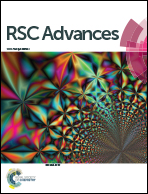CO2 conversion in a photocatalytic continuous membrane reactor
Abstract
The reduction of CO2 with water by using photocatalysts is one of the most promising new methods for achieving CO2 conversion to valuable hydrocarbons such as methanol (MeOH). In this work, prepared TiO2–Nafion™-based membranes were used in a photocatalytic membrane reactor, operated in continuous mode, for converting CO2 to methanol. By using the membrane with the best TiO2 distribution, a MeOH flow rate/TiO2 weight of 45 μmol (gcatalyst h)−1 was measured when operating at 2 bar of feed pressure. This value is higher than those reported in most of the literature data to date. Moreover, methanol production is considered as a relevant advance over the existing literature results which mostly propose CH4 as the reaction product.



 Please wait while we load your content...
Please wait while we load your content...